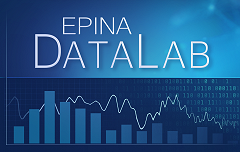
 Epina DataLab Epina DataLab Features Features Help & Support Help & Support Research done with DataLab Research done with DataLab Download Download Data Repository Data Repository Release History Release History Latest Changes Latest Changes Purchase Purchase |
Forschungsarbeiten mit DataLab
Die folgende Tabelle listet einige Forschungsarbeiten auf, bei denen Epina DataLab für die Analyse und Interpretation von Daten verwendet wurde (in chronologischer Reihenfolge).(1)
| Authors | Title & Reference |
| A. Salcido, T. Castro | Influence of meteorological patterns on the 2020 COVID-19 pandemic in the Mexico City region. Environmental Advances 7 (2022) 100157, DOI: 10.1016/j.envadv.2021.100157. |
| P. Spörl, A. Göndör, et al. | Development of a Mobile Module-Based Wind Tunnel for the Determination of Collection Efficiencies of Particulate Matter on Surface Structures.
Sustainability 2021, 13(17), 9565; DOI: 10.3390/su13179565 |
| E. Rottmann, K.F. Hauke, U. Krings, R.G. Berger | Enzymatic acrylamide mitigation in French fries – An industrial-scale case study.
Food Control 123 (2021) 107739 |
| R.C. Jadin, M.J. Jowers, et al. | A new vine snake (Reptilia, Colubridae, Oxybelis) from Peru and redescription of O. acuminatus
Evolutionary Systematics. 5 (2021), 1–12 |
| N. Pende, A. Sogues, et.al. | SepF is the FtsZ-anchor in Archaea: implications for cell division in the Last Universal Common Ancestor bioRxiv PrePrint, Oct. 2020, doi: https://doi.org/10.1101/2020.10.06.328377 |
| A.S. Pires-Luis, P. Martinek, et al. | Molecular Genetic Features of Primary Nonurachal Enteric-type Adenocarcinoma, Urachal Adenocarcinoma, Mucinous Adenocarcinoma, and Intestinal Metaplasia/Adenoma: Review of the Literature and Next-generation Sequencing Study Advances In Anatomic Pathology, Vol. 27 (2020) 303-310 |
| A. Salcido, S. Carreón-Sierra, A.-T. Celada-Murillo |
Air Pollution Flow Patterns in the Mexico City Region Climate 2019, 7(11), 128; https://doi.org/10.3390/cli7110128 |
| K. Wieland, S. Tauber, et al | In-Line Ultrasound-Enhanced Raman Spectroscopy Allows for Highly Sensitive Analysis with Improved Selectivity in Suspensions Anal. Chem. 91 (2019) 14231-14238 |
| T. Sathisha, D. Kezia, P.V.Bramhachari, R. Shetty Prakasham |
Multi-objective based superimposed optimization method for enhancement of l-glutaminase production by Bacillus subtilis RSP-GLU Karbala International Journal of Modern Science, Volume 4 (2018) 50-60 |
| C. Gasser, A. Genner, et.al. | Application of a tunable Fabry-Pérot filtometer to mid-infrared gas sensing Sensors and Actuators B: Chemical Volume 242 (2017) 9-14 |
| W.N. Reichelt, D. Waldschitz, C. Herwig, L. Neutsch |
Bioprocess monitoring: minimizing sample matrix effects for total protein quantification with bicinchoninic acid assay
Journal of Industrial Microbiology and Biotechnology, Volume 43, Issue 9, 1 September 2016, Pages 1271–1280, https://doi.org/10.1007/s10295-016-1796-9 |
| D. Rešetar, M. Marchetti-Deschmann, et al. | Matrix assisted laser desorption ionization mass spectrometry linear time-of-flight method for white wine fingerprinting and classification Food Control, Volume 64, June 2016, Pages 157-164 |
| V. Konakovsky, C. Clemens, M.M. Müller et al. | Metabolic Control in Mammalian Fed-Batch Cell Cultures for Reduced Lactic Acid Accumulation and Improved Process Robustness. Bioengineering 2016, 3(1), 5 |
| K. Bonazza, H. Rottensteiner, et al. | Ca2+ concentration-dependent conformational change of FVIII B-domain observed by atomic force microscopy Analytical and Bioanalytical Chemistry volume 407 (2015) pp. 6051–6056 |
| V. Konakovsky, A.C. Yagtu, C. Clemens, M.M. Müller, M. Berger, S. Schlatter, C. Herwig |
Universal Capacitance Model for Real-Time Biomass in Cell Culture. Sensors 15 (2015) 22128-22150 |
| C. Reidl-Leuthner, A. Viernstein, et al. | Quasi-Simultaneous In-Line Flue Gas Monitoring of NO and NO2 Emissions at a Caloric Power Plant Employing Mid-IR Laser Spectroscopy.
Analytical Chemistry, 86 (2014) 9058–9064 |
| F. Hollstein, M. Wohllebe, et al. | Challenges in Automatic Sorting of Bio-Plastics within the Recycling Chain by Means of NIR-Hyperspectral-Imaging. NIR2013 Proceedings, 2-7 June 2013, La Grande-Motte, France |
| O. Peralta, T. Castro, M. Durón, et al. | H2S emissions from Cerro Prieto geothermal power plant, Mexico, and air pollutants measurements in the area Geothermics 46 (2013) 55-65 |
| S. Rittmann, Ch. Herwig | A comprehensive and quantitative review of dark fermentative biohydrogen production Microbial Cell Factories 2012, 11:115 |
| M. Marchetti-Deschmann, W. Winkler, H. Dong, H. Lohninger, C.P. Kubicek, G. Allmaier |
Using Spores for Fusarium spp. Classification by MALDI-Based Intact Cell/Spore Mass Spectrometry Food Technol. Biotechnol. 50 (3) 334-342 (2012) |
| R. Reale, S.H. Plattner, G. Guida, M.P. Sammartino, G. Visco |
Ancient coins: cluster analysis applied to find a correlation between corrosion process and burial soil characteristics Chemistry Central Journal 2012, 6(Suppl 2):S9 |
| M. Kistler, Ch. Schmidl, E. Padouvas, H. Giebl, J. Lohninger, R. Ellinger, H. Bauer, H. Puxbaum |
Odor, gaseous and PM10 emissions from small scale combustion of wood types indigenous to Central Europe Atmospheric Environment, v.51, 2012 May, p.86(8) |
| F. Hollstein, M. Wohllebe, A. Kulcke, G. Stanzel, S. Bischoff |
Recognition of PET bottles in high efficient advanced reverse vending machines by VIS-NIR spectral imaging Proc. of the 15th International Conference on Near Infrared Spectroscopy (NIR 2011), 13 - 20 May 2011, Cape Town, South Africa |
| M. Marchetti-Deschmann, A. Lehner, V. Peterseil, F. Sövegjarto, R. Hochegger, G. Allmaier |
Fast wheat variety classification by capillary gel electrophoresis-on-a-chip after single-step one-grain high molecular weight glutenin extraction Anal Bioanal Chem (2011) 400:2403-2414 |
| J. Wolf, D. Bolius, H. Lohninger | Application of chemometric methods for the assessment of sun protection factors SOFW Journal (2002), 128(10), 47, 50-54. |
| G. Kos, H. Lohninger, R. Krska | Fourier transform mid-infrared spectroscopy with attenuated total reflection (FT-IR/ATR) as a tool for the detection of Fusarium fungi on maize Vibrational Spectroscopy, 29 (2002) 115-119 |
| (1) | Falls Sie DataLab in Ihren Forschungsarbeiten eingesetzt haben und möchten, dass Ihre Publikation in dieser Liste aufscheint, schicken Sie bitte ein PDF der betreffenden Publikation an office@epina.at. |